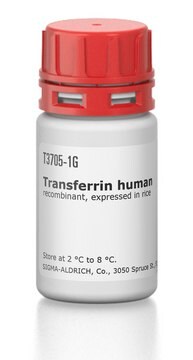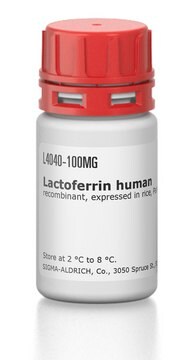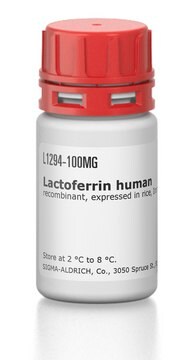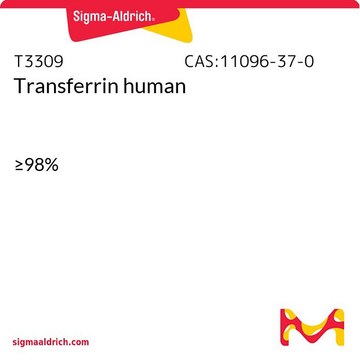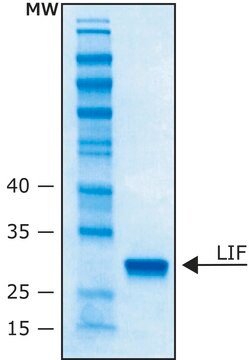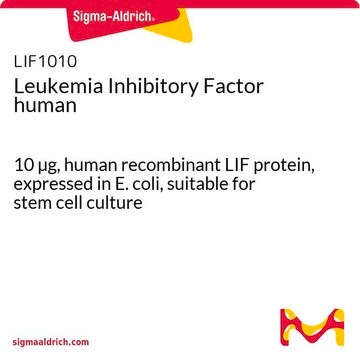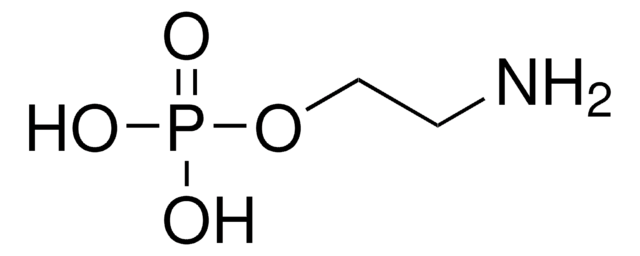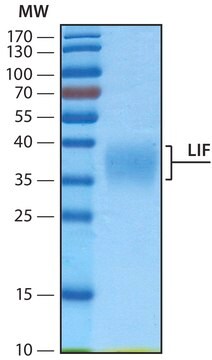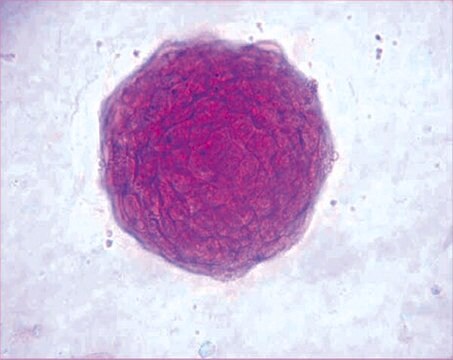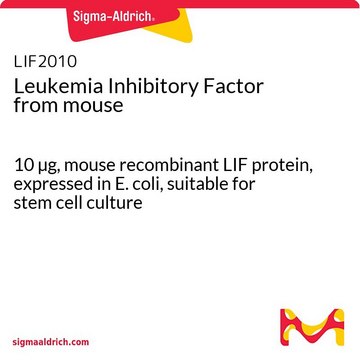L9545
Leukemia Inhibitory Factor human, animal component free
recombinant, expressed in rice, 500 μg/mL
Sinónimos:
Leukemia Inhibitory Factor human, LIF, rLIF
About This Item
Productos recomendados
recombinante
expressed in rice
Nivel de calidad
Análisis
>95% (SDS-PAGE)
potencia
>1 x 108 units/mg ED<sub>50</sub>
concentración
500 μg/mL
técnicas
cell culture | mammalian: suitable
impurezas
<0.05 EU/μg endotoxin
Nº de acceso UniProt
Condiciones de envío
dry ice
temp. de almacenamiento
−70°C
Información sobre el gen
human ... LIF(3976)
¿Está buscando productos similares? Visita Guía de comparación de productos
Acciones bioquímicas o fisiológicas
Forma física
Información legal
Código de clase de almacenamiento
10 - Combustible liquids
Punto de inflamabilidad (°F)
Not applicable
Punto de inflamabilidad (°C)
Not applicable
Certificados de análisis (COA)
Busque Certificados de análisis (COA) introduciendo el número de lote del producto. Los números de lote se encuentran en la etiqueta del producto después de las palabras «Lot» o «Batch»
¿Ya tiene este producto?
Encuentre la documentación para los productos que ha comprado recientemente en la Biblioteca de documentos.
Los clientes también vieron
Artículos
Leukemia Inhibitory Factor (LIF) is a stem cell growth factor used for the in vitro culture of pluripotent mouse embryonic stem cells (ES cells).
Nuestro equipo de científicos tiene experiencia en todas las áreas de investigación: Ciencias de la vida, Ciencia de los materiales, Síntesis química, Cromatografía, Analítica y muchas otras.
Póngase en contacto con el Servicio técnico